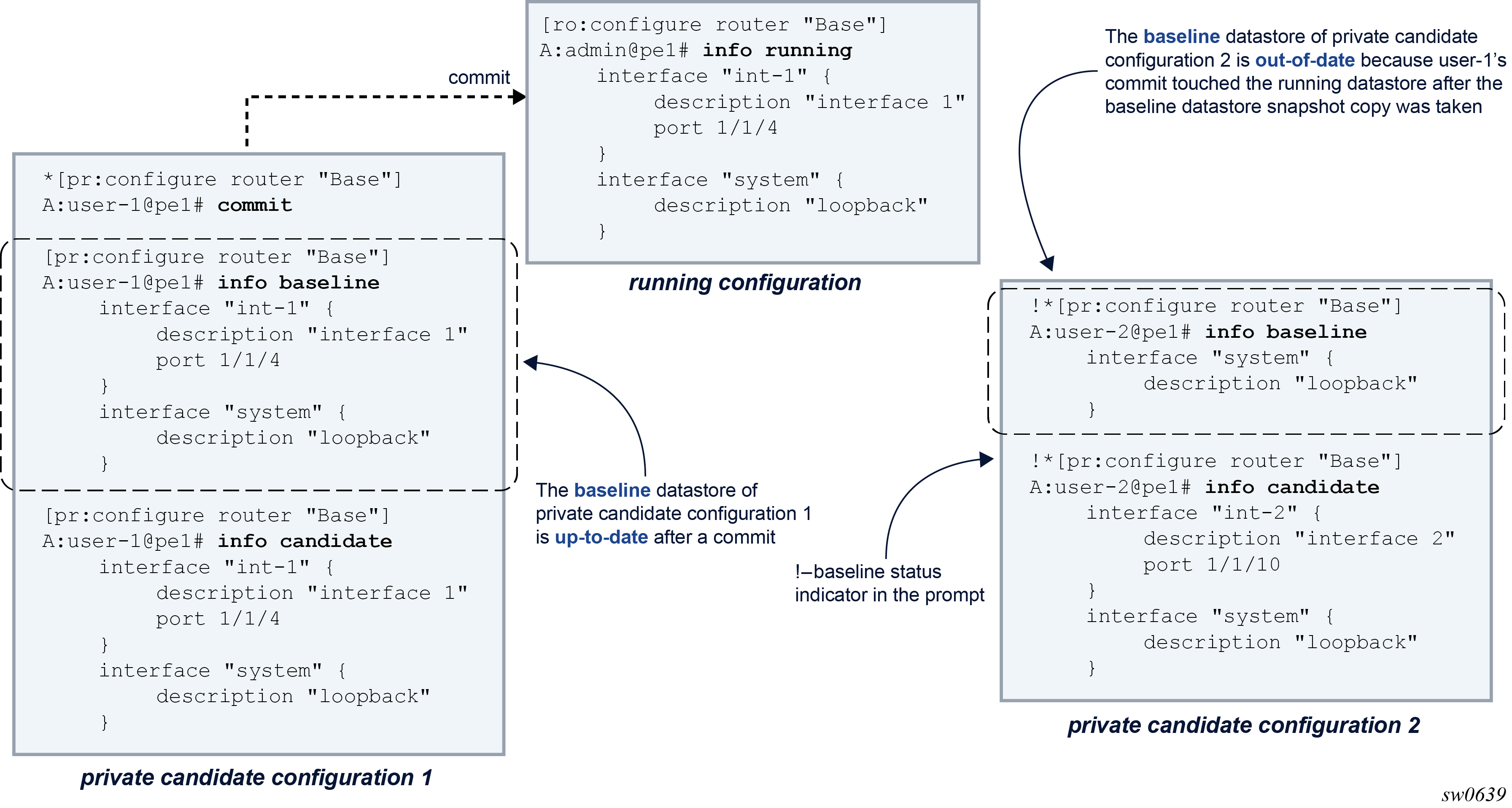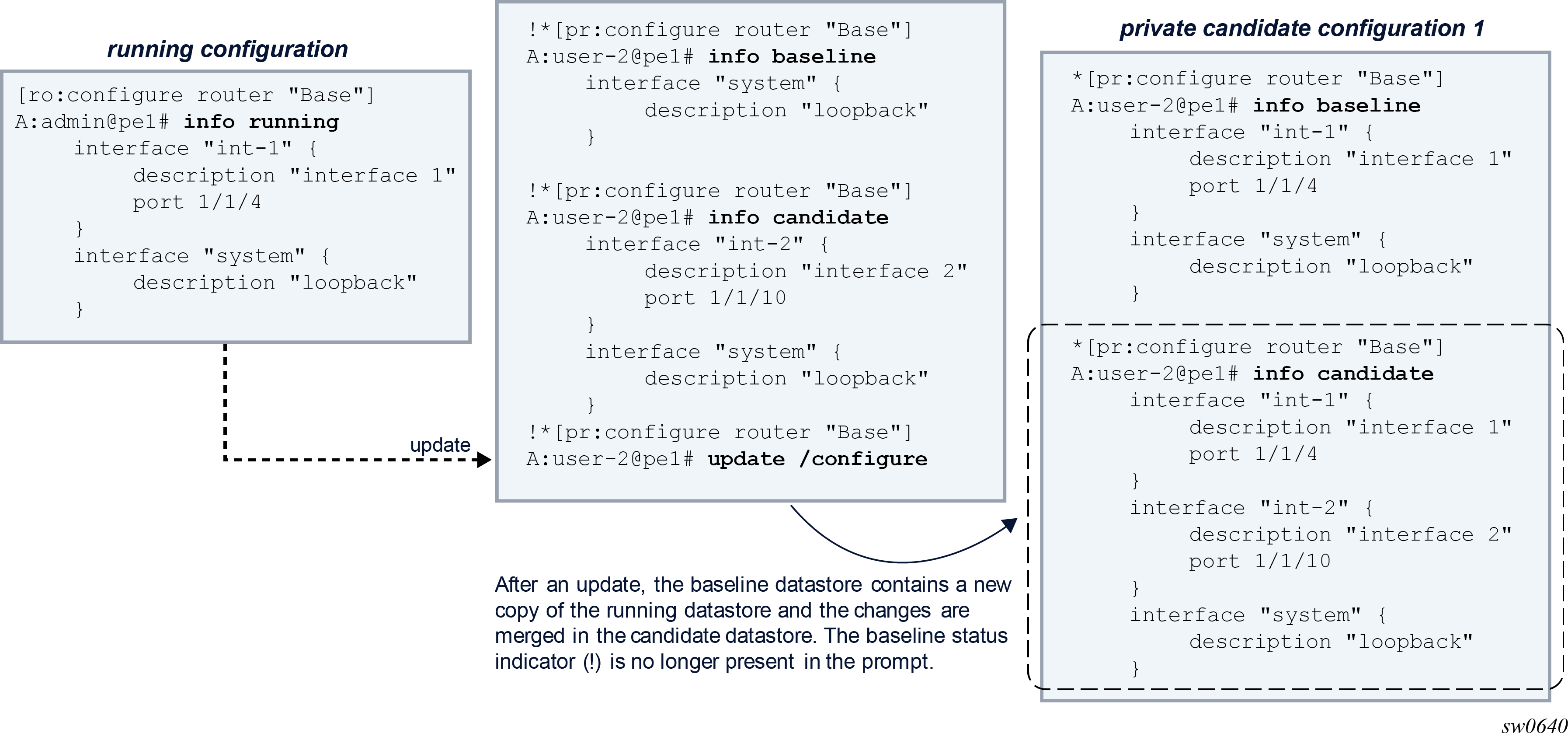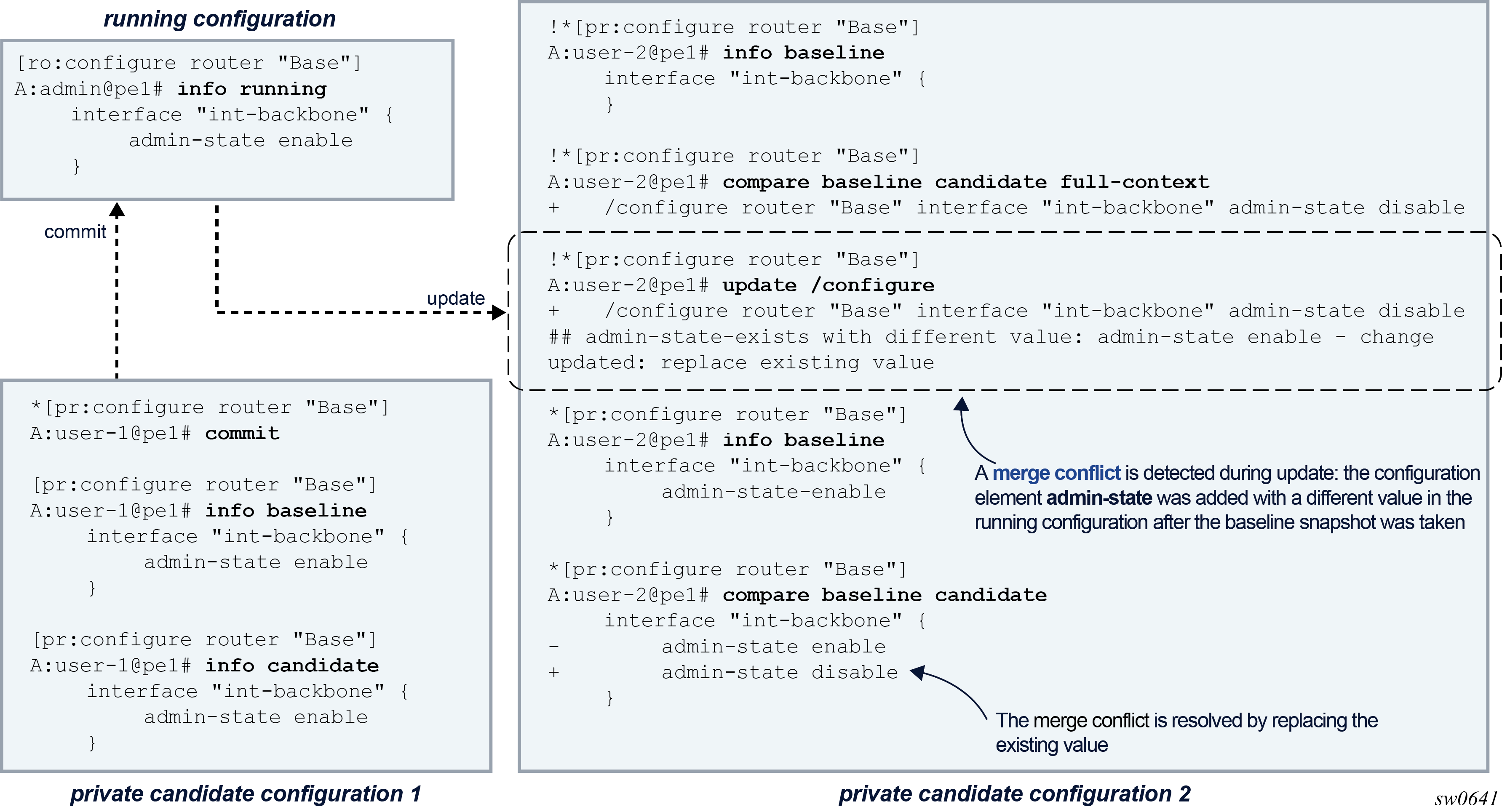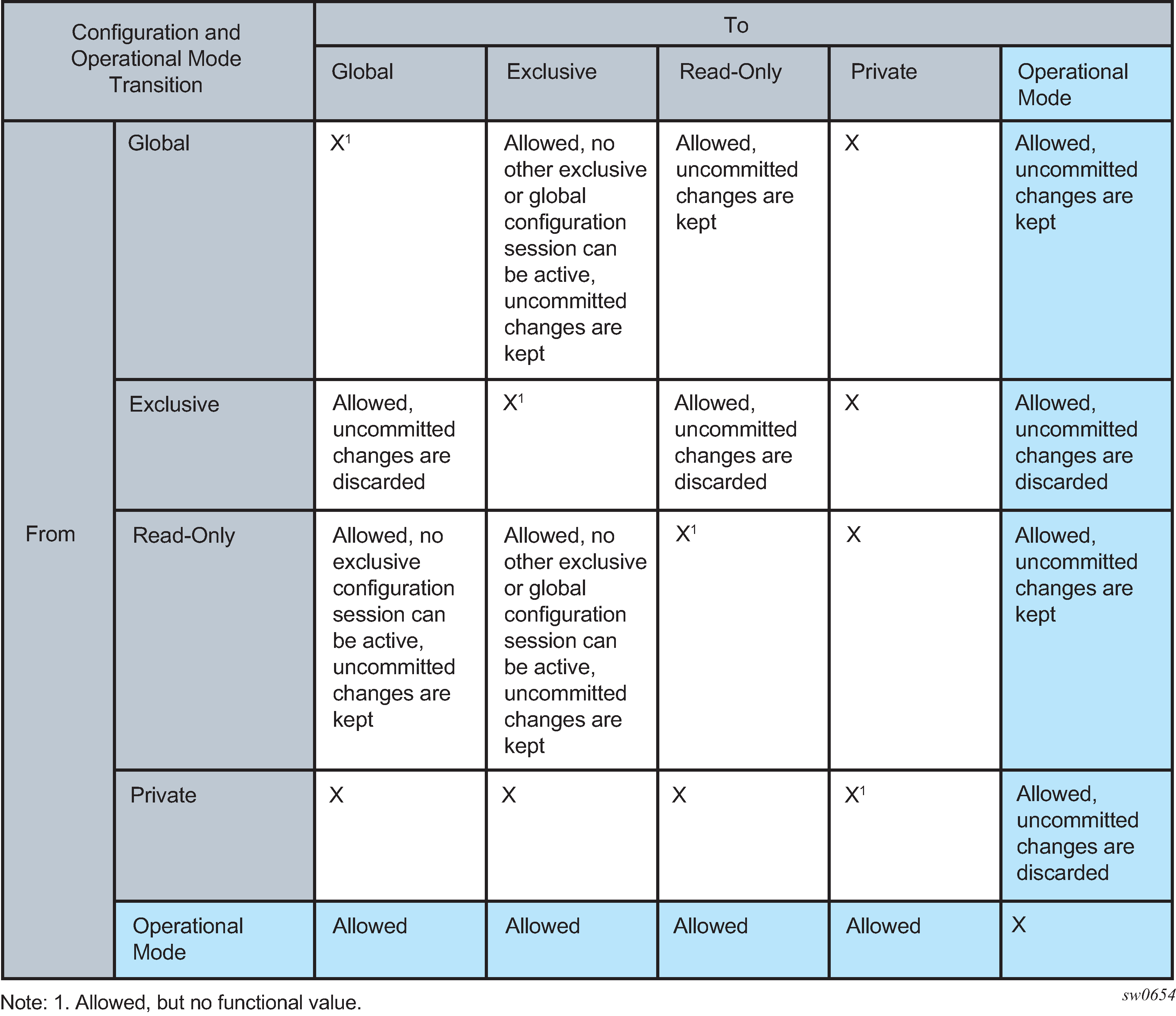Multiple Simultaneous Candidate Configurations
As introduced in Transactional Configuration Method, configuration changes are made in a candidate configuration and copied in the running configuration when the configuration changes are committed and become active.
This section describes:
how the running configuration and a candidate configuration interact using a running datastore, a baseline datastore, and a candidate datastore
how simultaneous configuration sessions access one or multiple candidate configurations as a function of their configuration mode
Figure 1 shows multiple candidate configurations.

The running configuration is the active configuration of the router and is stored in the running datastore. There is only one running configuration in the router and therefore, only one running datastore. The running datastore is always instantiated.
The candidate configuration is a working configuration that contains changes before they are activated in the router. A candidate configuration uses two datastores:
a baseline datastore that contains a snapshot copy of the running datastore at a specific moment in time
a candidate datastore that contains changes relative to its associated baseline datastore
Multiple candidate configurations can exist simultaneously in the router with one of the following:
a single global candidate configuration that is accessed by one of the following:
a single session in exclusive configuration mode
one or multiple sessions in global configuration mode
one or multiple sessions in read-only configuration mode
An exclusive and global configuration session are mutually exclusive. Read-only configuration sessions can coexist with an exclusive configuration session or with one or multiple global configuration sessions.
The global baseline datastore and global candidate datastore are always instantiated.
up to eight private candidate configurations. A private candidate configuration is accessed by a single session in private configuration mode. The private baseline datastore and private candidate datastore are instantiated when the user enters the private configuration mode and the datastores are deleted from the router when the user exits the private configuration mode.
one single private exclusive candidate configuration for system use only. Only one exclusive session can be active in the router at a time: either a user-started exclusive configuration session accessing the global candidate configuration, or a system-started private exclusive configuration session accessing a private candidate configuration. For more information, see Exclusive Private Configuration Session.
When a configuration session commits its candidate configuration, the router performs the following actions:
verifies the running configuration has not been changed by another configuration session
validates the candidate configuration by verifying the logic, constraints, and completeness of the candidate configuration
activates the candidate configuration by sending the new candidate configuration to the corresponding applications
After a successful commit, the changes are copied to the running datastore, the baseline datastore contains a new copy of the running datastore, and the candidate datastore is empty.
Furthermore, when simultaneous configuration sessions access different candidate configurations:
multiple private configuration sessions each access their own private candidate configuration
one or multiple private configuration sessions each access their own private candidate configuration and one or multiple global configuration sessions all accessing the global candidate configuration
one or multiple private configuration sessions each access their own private candidate configuration and one exclusive configuration session accessing the global candidate configuration
one or multiple private configuration sessions each access their own private candidate configuration and one private exclusive configuration session accessing a private candidate configuration
Each configuration session adds changes in the candidate datastore relative to the baseline associated with the candidate configuration. The baseline datastore contains a snapshot copy of the running datastore at a specific time. Therefore, multiple, simultaneous configuration sessions that are active in the router and that access different candidate configurations have their own unique view of the candidate configuration and cannot see other users’ changes, as shown in Figure 2.

Changes in a candidate configuration can only be committed when the running configuration has not been changed or touched after the baseline snapshot was taken. In other words, the baseline must be up to date to commit the changes.
Figure 3 shows how the baseline datastore of user-2’s candidate configuration is out-of-date after user-1 committed its changes. An exclamation mark (!) is shown in the prompt to indicate an out-of-date baseline status.

Because the baseline is out-of-date, user-2 must update its candidate configuration before committing. An update copies a new snapshot from the running datastore to the baseline datastore and merges the changes from the candidate datastore, as shown in Figure 4.

With more than one user working on the same part of the configuration, conflicts can occur when committed changes of one user’s configuration session are merged into another user’s candidate configuration. A merge conflict occurs when a configuration element is added, deleted, or modified in the candidate configuration and the same configuration element is also added, deleted, or modified in the running configuration after the baseline snapshot was taken. With the update command, the router resolves each merge conflict and installs the result in the candidate configuration, as shown in Figure 5.

When a commit operation is executed in a configuration session while the baseline is out-of-date, the router first attempts to automatically update the candidate configuration. If a merge conflict is detected, the commit operation is canceled, to allow the administrator to resolve the merge conflicts manually. The candidate configuration remains in the same state as before the commit operation.
In configuration mode, the administrator can use the following tools to check and resolve potential merge conflicts:
compare baseline running - list the changes that were made in the running datastore after a snapshot copy was stored in the baseline datastore
compare baseline candidate or compare - list the candidate configuration changes
update check - perform a dry run update. The router reports all merge conflicts as if an update was performed. The candidate configuration, that is, the baseline candidate datastore, is not changed with this command.
Conflict detection and resolution is detailed in Updating the Candidate Configuration.
